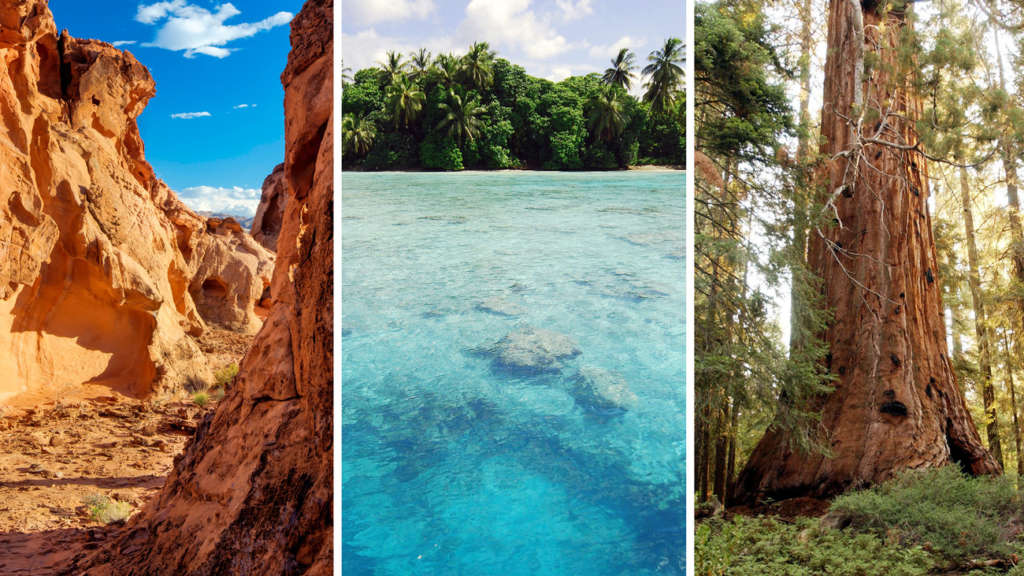The next fight over the legality of President Donald Trump’s executive orders will be about the designation of national monuments. Trump’s order to review all major monument declarations in the last 20 years sets the stage for reversal of some or all of President Barack Obama’s designations. Previous presidents have treated those decisions as irreversible. But Trump seems poised to break that tradition by claiming the implicit power to reverse anything a prior president has done.
The legal authority to declare national monuments comes from the Antiquities Act of 1906, landmark legislation (literally) enacted by Congress at the behest of President Theodore Roosevelt. The law gives the president authority to proclaim federal lands as national monuments in order to protect “historic landmarks, historic and prehistoric structures, and other objects of historic or scientific interest.” It also provides that the designated monument “shall be confined to the smallest area compatible with proper care and management of the objects to be protected.”
Unfortunately, the Antiquities Act is silent as to whether a subsequent president can reverse the designation. That leaves room for a legal dispute.
Sure enough, in December 2016, two conservative legal scholars, Todd Gaziano of the Pacific Legal Foundation and John Yoo of the University of California at Berkeley law school (yes, that John Yoo) argued in the Wall Street Journal that Trump could reverse Obama’s designations. (They later expanded the argument in a longer paper.)
On cue, the National Parks Conservation Association commissioned the venerable Washington law firm of Arnold & Porter to write a detailed analysis. It reached the opposite conclusion: that the president lacks the power to reverse earlier designations.
Who’s right? There’s no judicial precedent. But the Office of Legal Counsel of the Department of Justice has considered the issue before — and sided with the environmentalists.
In 1938, President Franklin Roosevelt asked the attorney general, Homer Cummings, if he could de-designate the Castle Pinckney National Monument, a site that had been used as a Civil War prison camp. The answer was no. Cummings reasoned that the statute gave the president authority to designate a monument but did not confer authority to reverse a prior designation. Thus, “the Executive can no more destroy his own authorized work, without some other legislative sanction, than any other person can. To assert such a principle is to claim for the Executive the power to repeal or alter an act of Congress at will.”
Congress at least implicitly endorsed this interpretation in 1976 when it enacted the Federal Land Policy and Management Act, which according to its legislative history was meant to “reserve to the Congress the authority to modify and revoke withdrawals for national monuments created under the Antiquities Act.”
The conservationists’ position is therefore legally strong. It’s also a bit literal — uncomfortably so if you think, as I do, that statutes should be read according to their functional purpose.
Thus, for example, it appears that five presidents have reduced the sizes of existing monuments. Most notably, Woodrow Wilson apparently cut the size of the Mount Olympus National Monument in 1915 by 313,280 acres from its original 639,200 acres.
Size reduction isn’t mentioned in the statute either, but it makes some sense as an implicit presidential right. The law, after all, does say the monuments must be as small as is compatible with their care. And that size designation seems to fall within the ongoing responsibility of a later president for a former president’s designation — provided, of course, that it is intended in good faith to protect the designated monument, not the opposite.
A more powerful legal argument from my perspective is that no president has claimed to de-designate a monument since the law took force. More than 100 years of unbroken precedent is strong evidence of what the law means.
The conservatives’ revision of Justice Department precedent is clever but less legally convincing. First, there is the matter of Yoo, author of the most famous repudiated Office of Legal Counsel memo in history, urging Trump to repudiate a memo from 1938.
Then there is the conservatives’ logic, which essentially insists that what one president can do by declaration another president must be able to undo. Presidents can fire officials whom the Constitution allows them to hire, even if the Constitution never expressly says so.
This argument sounds superficially plausible. But on closer examination it is an overstated theory of executive power.
The principle sounds good at first because it echoes the correct principle that a legislature can always undo anything that a prior legislature has done. But the executive isn’t a lawmaker. The president is the servant of Congress, at least when he isn’t exercising any inherent constitutional power, like the power to hire and fire executive employees.
It follows that when acting under direction from Congress, the president need not be able to undo prior presidential acts. And that’s just what the president is doing when declaring national monuments.
The best conclusion, then, is that Trump lacks the legal authority to reverse Obama’s national monument designations. But he probably has the capacity to make the sites smaller, provided it doesn’t amount to de-designation in practical terms. If he tries to do it anyway, expect the courts to deal him yet another in a string of reversals.
(Bloomberg)
